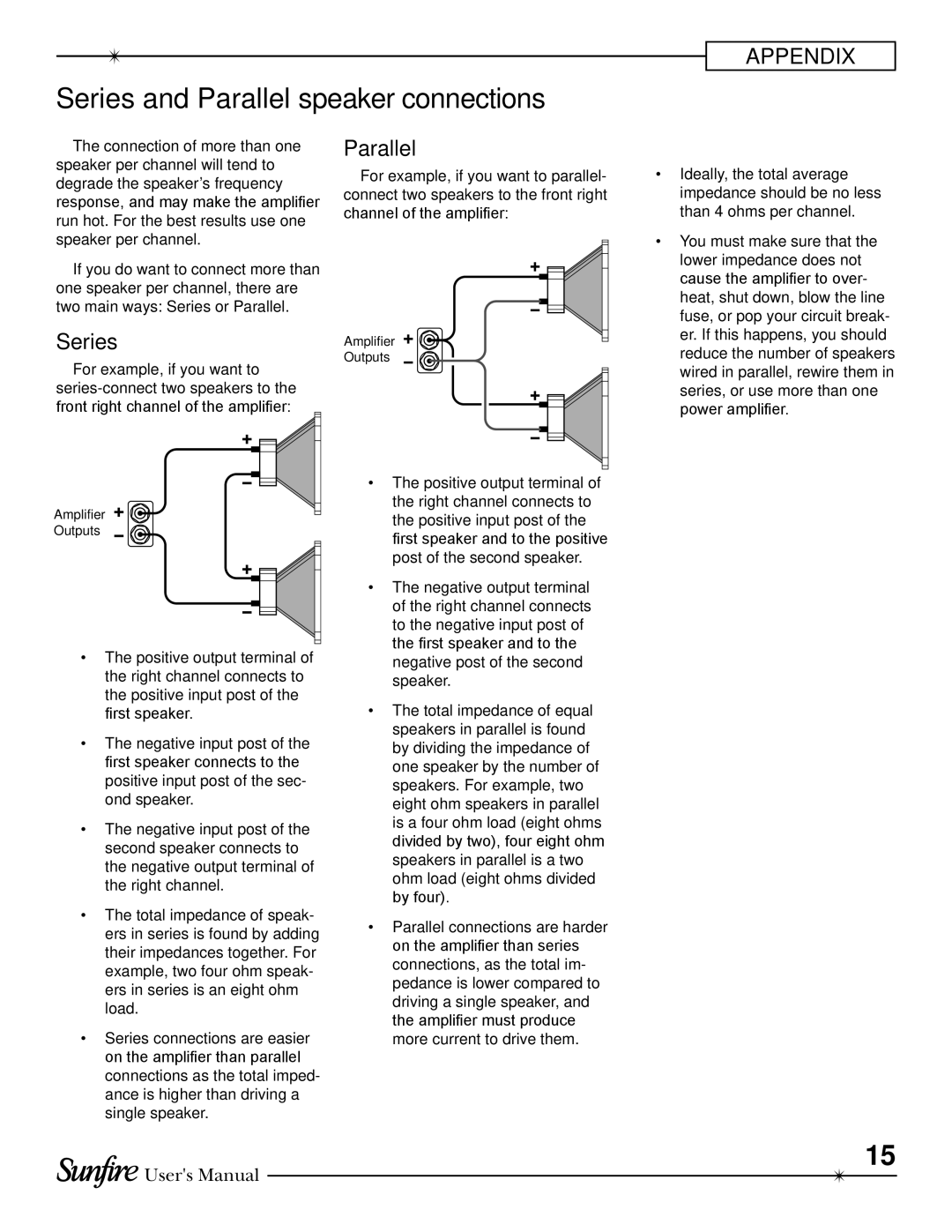TGA-7201, TGA-7401-230, TGA-7201-230, TGA7401 specifications
The Sunfire TGA series stands as a testament to cutting-edge audio engineering, with models like the TGA7401, TGA-7201-230, TGA-7401-230, and TGA-7201. Each of these amplifiers is meticulously crafted to cater to the needs of audiophiles seeking unparalleled performance and robustness in their sound systems.The Sunfire TGA7401, for instance, boasts a powerful output of 400 watts per channel into 8 ohms, making it an excellent choice for driving demanding speakers. This model employs Sunfire’s patented Tracking Downconverter technology, which provides high efficiency while minimizing distortion. The low-profile design of the TGA7401 allows it to fit comfortably in AV racks without sacrificing operational power, ensuring that it can deliver high-quality sound in any setup.
Similarly, the TGA-7201-230 is designed for those who appreciate compactness without compromising audio fidelity. With its 200 watts per channel output, this amplifier is ideal for smaller setups or as an addition to a home theater system. The TGA-7201-230 features advanced thermal management systems that keep the amplifier cool during extended use, increasing durability and performance reliability.
The TGA-7401-230 presents a hybrid of power and flexibility, offering both balanced and unbalanced inputs. This feature allows users to integrate the amplifier seamlessly into various audio setups, whether it be for home theater or high-fidelity stereo listening. The inclusion of a sophisticated signal path and upgraded components ensures that the audio performance is always crystal clear, with an impressive dynamic range.
On the other hand, the TGA-7201 rounds out this impressive lineup with its combination of efficiency and streamlined features. It maintains a low total harmonic distortion rate, ensuring that listeners receive accurate sound reproduction, which is essential for both music and cinema experiences. The compact design enables it to be used in various environments, while still delivering the power necessary for an exhilarating audio experience.
Overall, the Sunfire TGA series exemplifies high-performance audio technology, bringing forth amplifiers capable of delivering clear, powerful sound. With their robust build quality, innovative technologies, and impressive specifications, models like the TGA7401, TGA-7201-230, TGA-7401-230, and TGA-7201 provide a premium listening experience for any audio enthusiast. Whether you are building a home theater or simply seeking to upgrade your audio setup, the Sunfire TGA series stands ready to enhance your listening experience.

